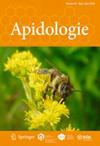Commercial honey bee keeping compromises wild bee conservation in Mediterranean nature reserves
Abstract
Global commercial honey bee keeping for crop pollination and honey production is increasingly identified as a threat to wild bee populations. Intensive honey bee keeping is particularly alarming in Mediterranean regions that are considered global diversity hotspots for bees. Yet, the effects on the bee communities and their variation as a function of the distance to apiaries (i.e. collection of bee hives) remain poorly explored. To fill this gap, we investigated 56 sites adjacent and far (> 1 km) from apiaries in three large nature reserves in Northern Israel. We explored the effects of proximity to apiaries on wild bee taxonomic and phylogenetic diversity and compared bee community composition between sites far and near to apiaries. Our records of 295 bee species include regionally restricted and undescribed species and contribute to the knowledge of Israel’s bee fauna. We found that proximity to apiaries reduced both the taxonomic and phylogenetic diversity of wild bees, and that this impact depended on individual abundance. We show that across nature reserves, 41.7 to 56.5% of the bee species diversity is concentrated in sites far from apiaries, with fewer species shared between near and far sites. Our results suggest that honey bee keeping is correlated with lower species richness in wild Mediterranean bee communities, potentially disrupting pollination processes and ultimately compromising ecosystem stability. We caution against intensive bee keeping in or near nature reserves for the conservation and safeguarding of diverse Mediterranean wild bee communities.

 求助内容:
求助内容: 应助结果提醒方式:
应助结果提醒方式:


